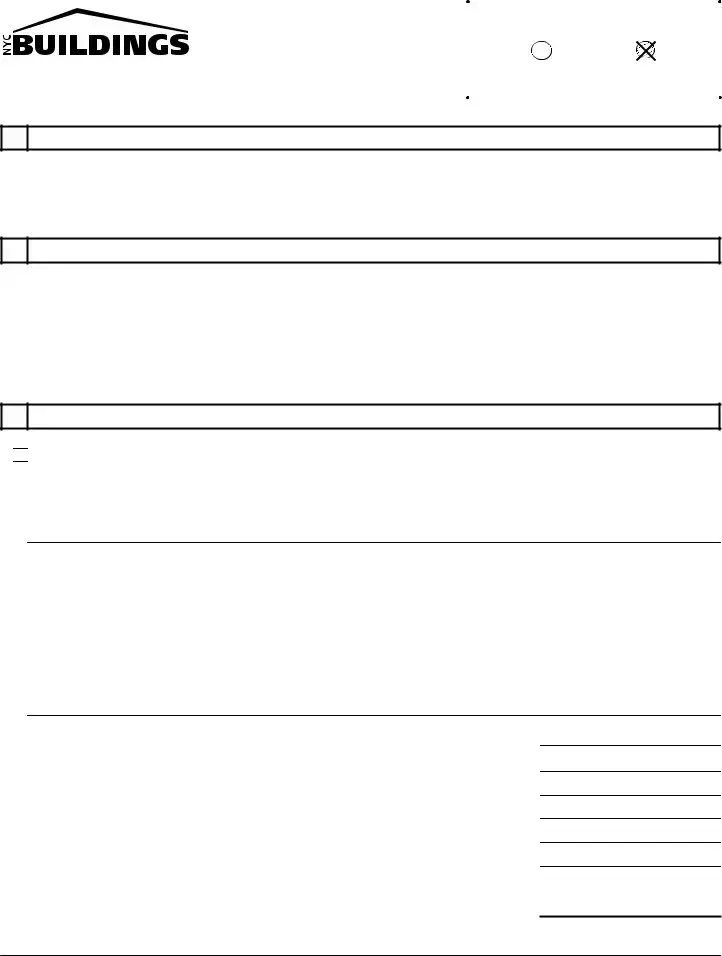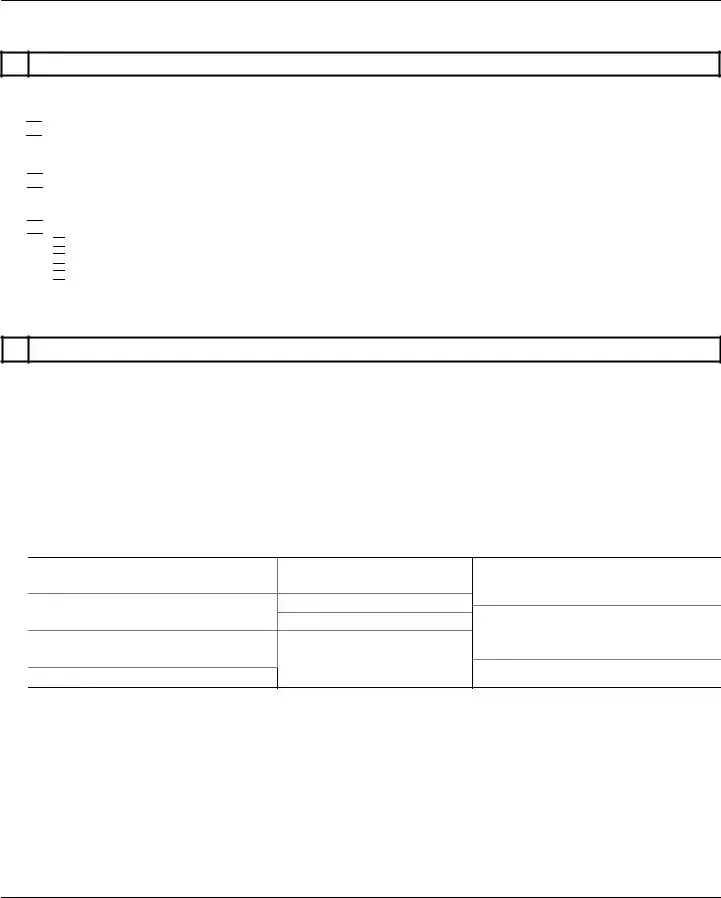The Certificate of Occupancy Application is similar to the ST-1 form, focusing on obtaining approval for buildings' usage. This document is required when a new building is constructed, or an existing building undergoes significant changes affecting its use, egress, or occupancy type. It includes information about the building, including location, owner details, and the intended use, mirroring the structure of the ST-1’s emphasis on location and applicant information.
The Department of Buildings (DOB) Permit Application shares similarities with the ST-1 form by requiring detailed information about the proposed work and the parties involved. It is necessary for construction, demolition, or alteration projects. This form includes sections for identification of the contractor, property owner, and specifics of the planned work, akin to the ST-1's structure of outlining proposed street tree actions.
The Environmental Assessment Statement is similar in its goal to evaluate the impact of proposed projects, focusing on environmental factors. Like the ST-1 form, which assesses the impact on street trees, this document requires applicants to provide comprehensive details about the project, including location and descriptions of potential environmental impacts, demonstrating the project's compliance with local environmental regulations.
The Landmarks Preservation Commission (LPC) Permit Application, necessary for work on landmarked buildings or within historic districts, resembles the ST-1 form. It collects detailed information about the proposed work, including location and descriptions, ensuring compliance with historic preservation standards. Both forms serve regulatory compliance purposes, albeit under different jurisdictions (tree preservation vs. historic preservation).
The Alteration Type-1 (Alt-1) Application for building permits in NYC, required for major renovations affecting use, egress, or occupancy, is akin to the ST-1 form in its comprehensive approach to modifying existing urban elements. It includes detailed owner and contractor information and a thorough description of the proposed work, emphasizing compliance with city regulations.
The Site Safety Plan, required for construction projects, parallels the ST-1 form by concentrating on specific aspects of safety and regulatory compliance. It necessitates detailed drawings and descriptions of the project, highlighting measures for protecting public and worker safety, akin to how the ST-1 underscores adherence to street tree protection standards.
The Zoning Diagram Submission, part of the zoning and land use approval process, relates to the ST-1 form by detailing property information and proposed usage to ensure zoning compliance. This document includes diagrams and detailed explanations of the project’s conformity with zoning regulations, similar to how the ST-1 involves calculations and compliance certifications related to street trees.
The Temporary Construction Equipment Permit, required for the use of equipment like cranes and scaffolding, shares the ST-1 form’s focus on specific project elements. It includes information on the equipment's type, use location, and duration of use, reflecting the approach of detailing project-specific compliances and requirements.
The Sidewalk Shed Permit application, necessary for installing protective structures around construction sites, resembles the ST-1 form in its regulatory and safety focus. It requires detailed location information and descriptions of the structure, ensuring public protection akin to the ST-1’s objective of street tree preservation during construction.
The Plumbing Permit Application is similar to the ST-1 form as it deals with specific elements of building services, requiring detailed plans and specifications. Like the ST-1, it includes information on the applicant, project location, and details of the proposed work, ensuring compliance with codes and regulations pertaining to plumbing systems.


 I herby certify this application complies with all street tree requirements specified in the NYC Zoning Resolution, as well as NYC Department of Transportation, NYC Department of Parks and Recreation (“Parks”) and all other applicable rules and regulations unless appropriate waivers are obtained. Below is summary information pertaining to these requirements and in addition I have included a complete zoning calculation supporting this summary within the drawing set submitted as part of this application.
I herby certify this application complies with all street tree requirements specified in the NYC Zoning Resolution, as well as NYC Department of Transportation, NYC Department of Parks and Recreation (“Parks”) and all other applicable rules and regulations unless appropriate waivers are obtained. Below is summary information pertaining to these requirements and in addition I have included a complete zoning calculation supporting this summary within the drawing set submitted as part of this application.

 The building’s proposed dominant use group is 17 or 18 and is exempt from street tree requirements as per NYC Zoning Resolution. I understand that any future changes to the dominant use group of the buildings must be submitted to the Department and may require full street tree compliance.
The building’s proposed dominant use group is 17 or 18 and is exempt from street tree requirements as per NYC Zoning Resolution. I understand that any future changes to the dominant use group of the buildings must be submitted to the Department and may require full street tree compliance.
 This is an Enlargement of a single or two family residence that is not located in one of the special districts specified in ZR §
This is an Enlargement of a single or two family residence that is not located in one of the special districts specified in ZR § 
 Proposed work is EXEMPT because
Proposed work is EXEMPT because 
 This is
This is 
 This is
This is 
 This is
This is